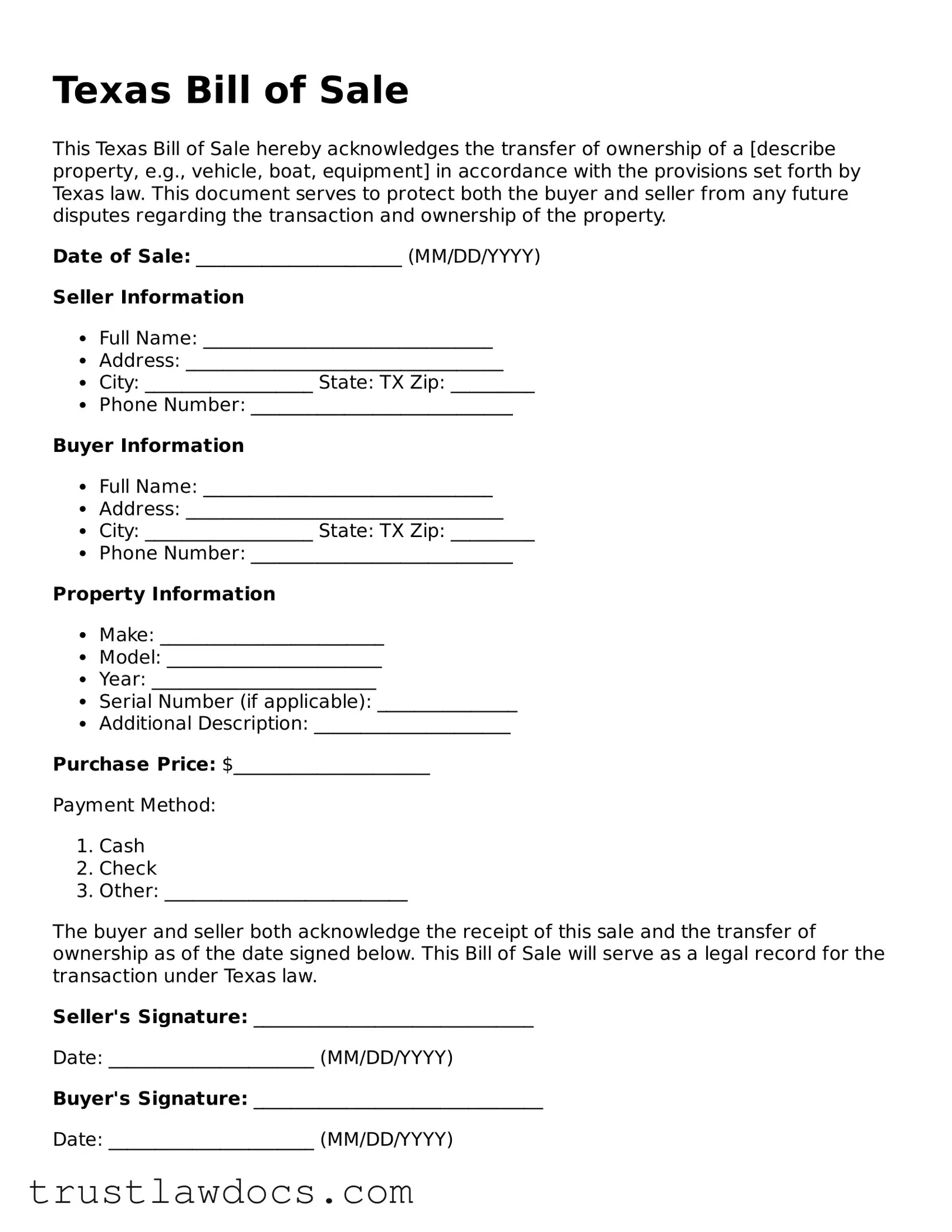What is a Texas Bill of Sale form?
A Texas Bill of Sale form is a legal document used during the sale of personal items such as cars, boats, motorcycles, and other property in Texas. It records the transaction between the buyer and the seller and provides proof of the change of ownership. The form typically includes details about the item sold, the sale price, and the parties involved.
Do I need a Texas Bill of Sale to sell my car?
While it's not always legally required to have a Texas Bill of Sale to sell your car, it's highly recommended. This document provides important evidence of the transaction and can protect both the seller and buyer in case of disagreements or disputes in the future. Moreover, it may be required by your local county tax-assessor collector’s office when the buyer goes to register the vehicle.
What information should be included in a Texas Bill of Sale form?
A comprehensive Texas Bill of Sale form should include the full names and addresses of both the buyer and the seller, a detailed description of the item being sold (including make, model, year, and VIN for vehicles), the sale price, the sale date, and signatures from both parties. Including an acknowledgment of the item's condition and any warranties or "as is" status is also advisable.
Is a Texas Bill of Sale form required for the sale of all items?
No, a Texas Bill of Sale form is not required for the sale of all items. However, for high-value items like vehicles, boats, and firearms, it's highly encouraged to complete this form to create a legal record of the sale. For everyday items or lower value goods, though still useful, the necessity for a bill of sale is less critical.
Do both parties need to sign the Texas Bill of Sale form?
Yes, for the Texas Bill of Sale form to be considered valid and effective, both the buyer and the seller must sign the document. These signatures acknowledge that both parties agree to the terms of the sale and verify the accuracy of the information provided on the form.
Does the Texas Bill of Sale form need to be notarized?
Generally, the Texas Bill of Sale form does not need to be notarized. However, for certain transactions or at the request of one of the parties, notarizing the document can add an extra level of legal validity and protection. It's best to check if any specific requirements exist for your particular situation or type of sale.
Can I create a Texas Bill of Sale form myself?
Yes, you can create a Texas Bill of Sale form yourself as long as it includes all the necessary information such as the details of the transaction, the parties involved, and their signatures. Templates and samples are available online to help guide you through the process. However, ensuring that the document complies with local laws and regulations is important.
What should I do after completing the Texas Bill of Sale form?
After completing the Texas Bill of Sale form, both the buyer and the seller should keep a copy for their records. The buyer may need the document for registration, insurance, or taxation purposes. It's also wise to record the transaction with any relevant government offices or agencies, depending on the item's nature.
